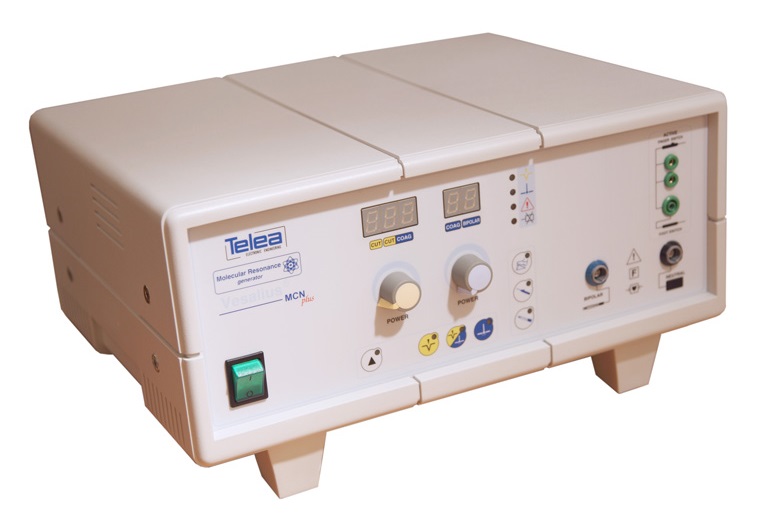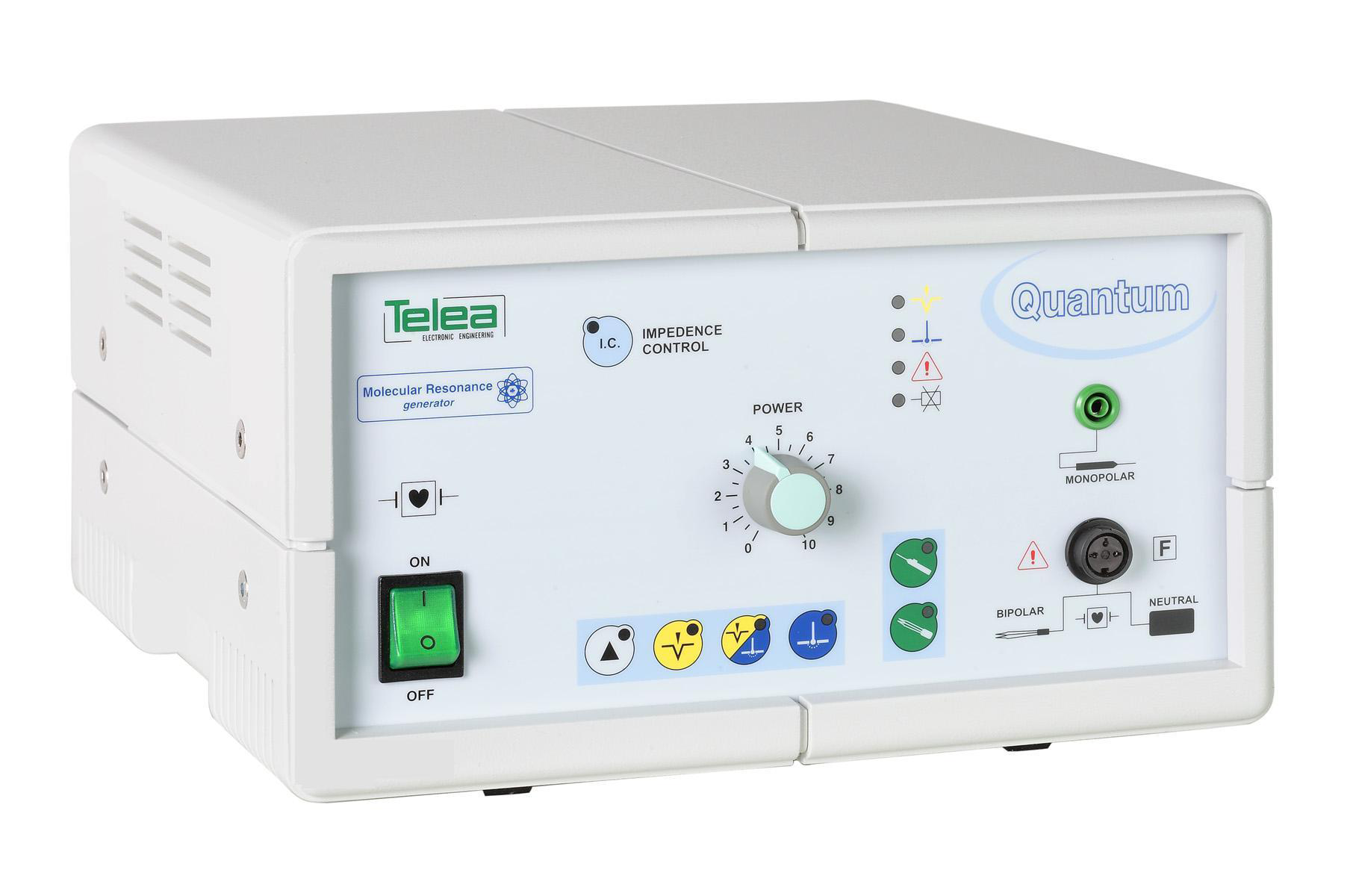QMR TECHNOLOGY APPLIED TO SURGERY
Quantum Molecular Resonance Technology (QMR) is used in surgical devices through the product lines Vesalius®, Quantum® and Essential®. These are excellent tools that allow the surgeon to operate with the greatest care and respect of the surrounding structures and tissues.
Unlike the traditional electro and radiosurgery, which base its working principle on a mere transfer of thermal energy (heat generated by the flow of electric current), our devices employ a spectrum of frequencies such that the transferred energy translates only minimally in thermal rise; the predominant component of energy transmitted to the tissue interacts directly at the level of molecular bonds, breaking them up in a non-thermic way. This effect is obtained thanks to the fact that the frequencies used by our scalpels are extremely high (ranging between 4MHz to 16 MHz) and of specific values, which proved to be extremely effective for the purpose.
The effect of resonance with the molecular bonds is of extreme importance in order to obtain the desired results (breaking up of molecular bonds and considerably limiting the heat transfer).
To understand the importance of the role that plays the resonance effect, consider the example of crystal glass that shatters when it is hit by a sound wave of appropriate frequency. As it is well known, the breaking of the glass is not so much dependent on the intensity of the incident sound wave but from the fact that it is perfectly modulated on the resonance frequency of the glass itself.
The use of the QMR scalpel allows to obtain an extremely precise and delicate cut. It is estimated that the temperature on the tissue adjacent to the cut does not exceed 45° C.
Even the coagulation is obtained by exploiting the same working principle. In this case however, it is estimated that the increase in temperature on the tissue is limited to 65° C.

